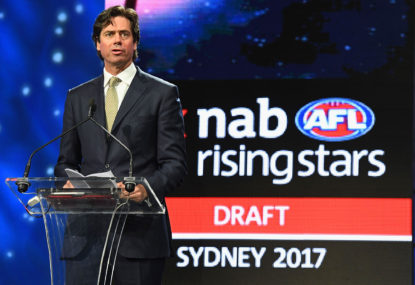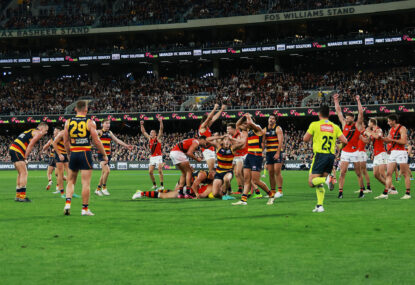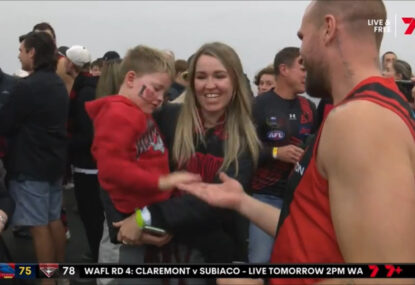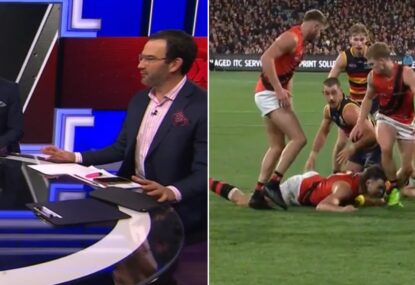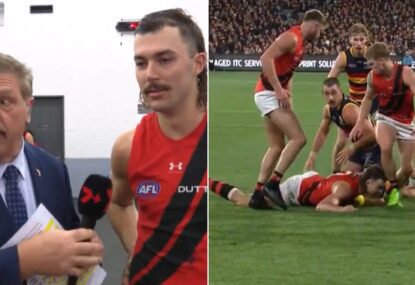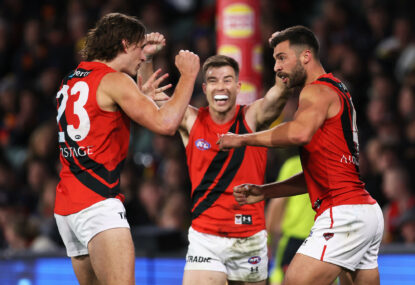After leaving us in the dark for most of the season, the AFL finally clarified a lot of what we’ve been waiting to hear about with regards to 2018’s trade period and draft during the week.
To start with, this year’s player exchange period will be a little shorter than in the past.
As usual free agency will begin on the Friday (October 5) after the grand final, with the trade period itself opening the following Monday (October 8).
Free agency will then close that Friday (October 12), and the trade period will close on Wednesday night of the following week (October 17), which is two days earlier than usual.
However, the trade period will not close until 8:30pm AEST, whereas in the past the deadline for trades to be finalised has typically been 2pm.
This decision has been made largely with the intention of allowing the closing day of trade period – when the vast majority of deals are typically done – to be more of a prime-time event.
Last year the final day of the trade period was broadcast live on AFL.com.au – that might be the case again this year, or it’s possible it could be broadcast on Fox Footy or even free-to-air TV.
All things considered, that’s fairly similar to previous years, just on a somewhat tighter schedule. But there are bigger changes to come.
After the close of this first window of the trade period, it will reopen not once but twice more – for near on a month (October 18 – November 16), and then again live during the draft itself.
On these occasions, clubs will be able to trade draft picks only – not players. So the first window will be spent finding players new homes before clubs turn their focus to jostling for the best draft position, right up until during the very draft itself.
The draft will now be a two-day event with the first round conducted on Thursday night (November 22), and the remainder of the national draft plus the preseason and rookie drafts on Friday (November 23).
It will be held in Melbourne at Etihad Stadium – which will by then be known as Marvel Stadium – with clubs able to use corporate boxes as private offices in which they can discuss strategy and work out potential live trade deals.
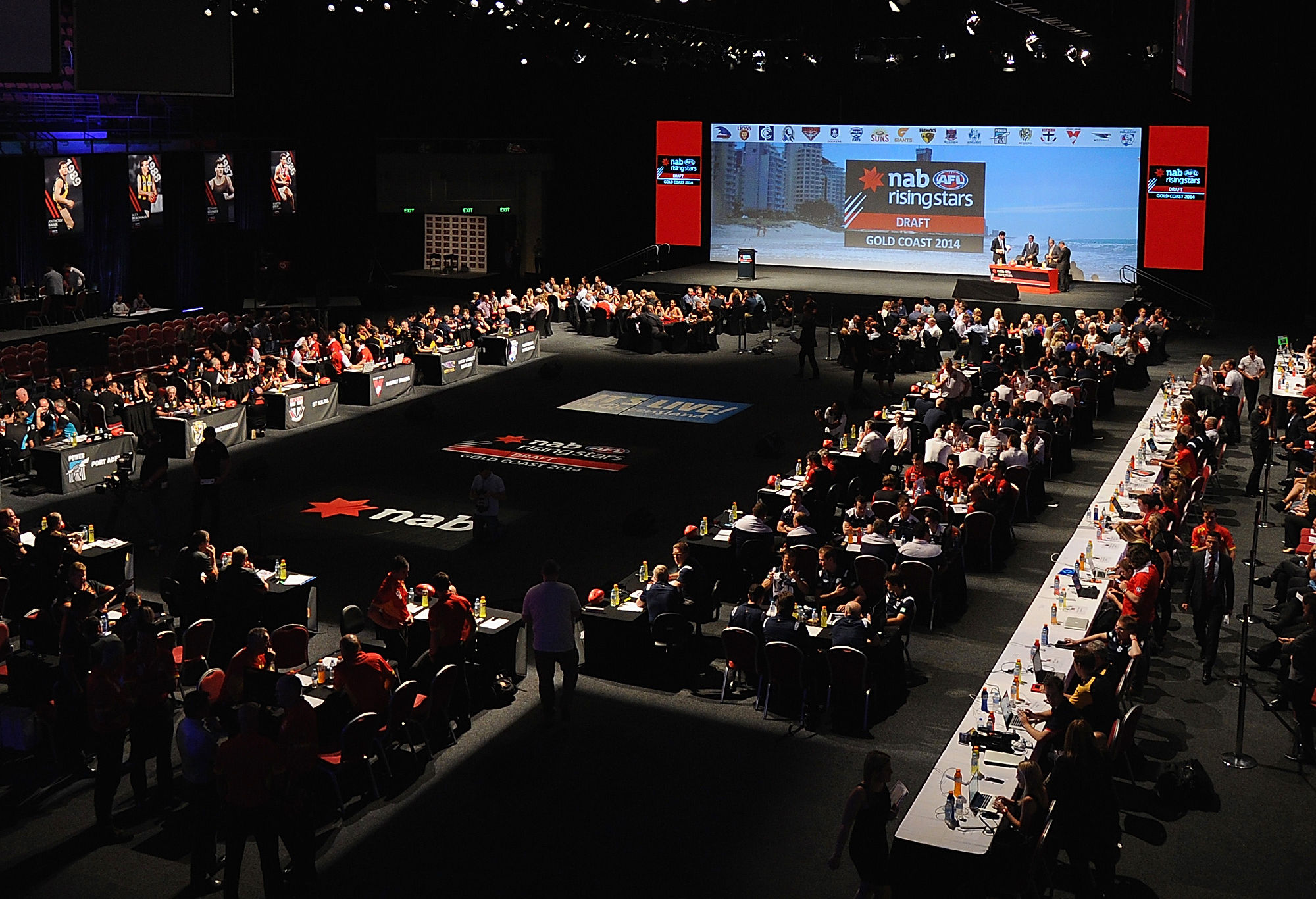
(Photo by Matt Roberts/Getty Images)
So what does all this mean in a practical sense? It’s a little hard to predict, but we can speculate.
It’s clear that the changes being made are an attempt to copy and capture some of the excitement of the major US sports drafts, particularly the NFL.
Gillon McLachlan has probably watched Draft Day a few too many times, and so have I. One can’t help but be lured in by the potential drama of live strategy decisions being played out mid-draft.
Of course, the real NFL draft itself isn’t as dramatic as a movie and, unfortunately for the AFL’s desire to turn the draft into a primetime event, ours will be another step further down in tempo.
The AFL simply lacks two of the key ingredients that make the NFL draft such a sporting phenom in itself: the ability to trade players live, and a nationally popular pre-draft competition.
Realistically we’re not ever going to have either – the AFLPA’s control over player movement is just too deeply entrenched for the former, and there probably is never going to be a large enough interest level in the later.
Without the drawcard of seeing players you’re familiar with traded live, or greater popular knowledge of the new players whose fates will be decided in the draft itself, I simply don’t see the changes that have been made here driving a significant public interest increase in the draft itself.
Personally I’m still a fan of the idea that an auction draft, as I proposed in more detail in January, would make the draft a more watchable affair – but I suppose it turns out AFL house isn’t reading my columns giddily waiting for governance ideas. Rude.
The ability to trade picks both in the month leading up to the draft and live during the draft itself will still add a new dimension of strategy, if not a particularly broad one, and will no doubt be of interest to those who, like myself, are already committed list management fanatics.
I’d expect that there’ll be a decent number of pick swaps done in the window between the close of player movement and the start of the draft itself – these have been on the rise more and more in recent years so we should see a bit of action.
During the draft itself is a whole other question though, simply because at this point in time we don’t know how long clubs are going to have on the clock to make a deal.
At the moment clubs have two minutes on the clock before they must make an extension, however, they do have the option of requesting extra time.
I sought clarification from AFL spokesman Patrick Keane on whether or not the amount of clock time per draft pick would be increased to allow for deals to be done mid-draft, and he said as follows:
“The time for a club to make its selection is currently up for discussion internally. We’ve not yet made a final decision on whether that will change or not.”
It’s a really difficult decision for the league to make.
On one hand, if they wish for clubs to actually make use of the live trading rules, then they will probably have to give them more time to operate.
On the other hand, if they lengthen the time between draft picks too much, there’s a good chance the draft – already an event often accused of dragging on too long – will become a grotesquely elongated snoozefest.
When live trading does happen, I suspect it will mostly revolve around picks in the middle and later sections of the draft as clubs further down the order see players unexpectedly slide, and offer to swap clubs with timely selections a future pick so they can secure the player they want.
However, the new live trading system does include one major loophole that is just waiting to be exploited in a big way by a canny club – a good example this year would be the developing scenario featuring North Melbourne and their academy player Tarryn Thomas.
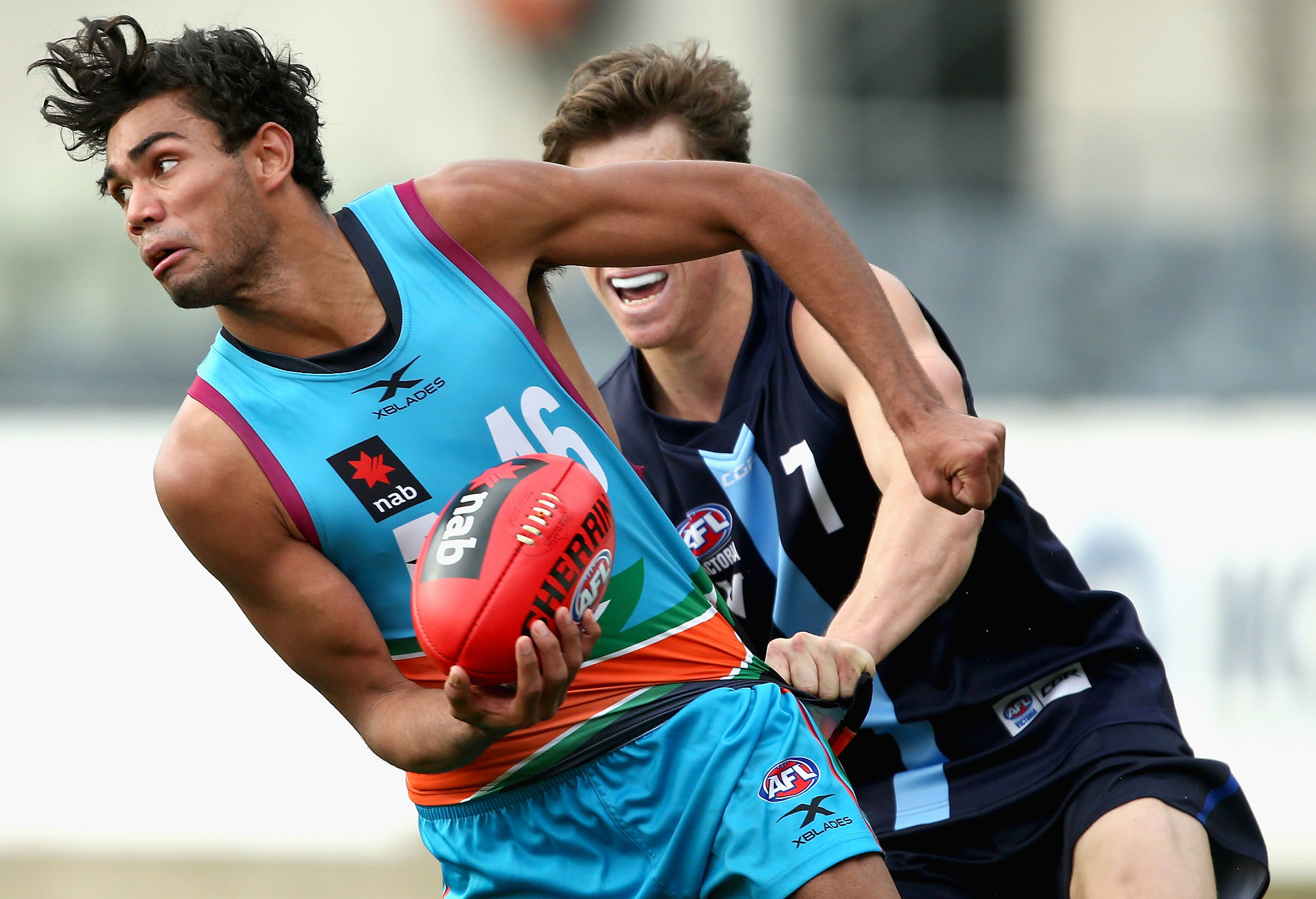
(Photo by Robert Prezioso/AFL Media/Getty Images)
For those not familiar with Thomas, he is an indigenous player eligible to be drafted by North Melbourne through their next-generation academy zone in Tasmania.
Thomas garnered some media attention when he set the Division 2 tournament of the under-18 national championships on fire earlier this year and then was solid if not quite at the same level during the Division 1 tournament.
At the moment he’s rated as being in the somewhat ambiguous zone of this year’s draft – not quite among the top six prospects, but potentially in the mix for anywhere from say pick 7 to pick 15 or so.
On current ladder position North Melbourne would enter the draft with pick 9, and not knowing whether a bid is likely to come before or after then puts them in a really tricky position.
If a bid comes before then and they choose to match it – as they surely would – then they would have to pay the price of pick 9 for Thomas.
However if a bid came afterwards they would essentially strike the jackpot by being able to use pick 9 on another highly-rated prospect – say Ian Hill or Connor Rozee – and then pay for Thomas with a combination of their second and third-round picks.
While pick 9 would be a fair price to pay for Thomas, North are no doubt pursuing every possible angle to game the system as much as can be done and secure Thomas at the lowest price they can.
One avenue that they’ve gone down is looking to trade their first selection in this year’s draft so that a bid, regardless of where it comes, has to be paid for with picks in the second round or later.
They pursued Jordan de Goey along this line of thought and it’s possible that recent rumours regarding Jared Polec might also be a continuation of this strategy.
However, the inclusion of live trading in the draft allows them an alternative path – one that is much more flexible and essentially takes the guesswork out of the equation.
This strategy would be to retain pick 9 and then, if a bid comes for Thomas before that selection, trade it live for a future 2019 pick before matching the bid, then match the bid with later picks in the 2018 draft.
The fact that clubs can make a manoeuvre like this isn’t something that’s been made clear in the AFL’s public announcement of live trading, so I again requested clarification from Patrick Keane. He said:
“If a club can complete a trade in the time before it is required to make its decision, they are allowed to trade. They won’t get any extension of time but they are permitted to do so if they can finalise it.”
The NFL draft doesn’t have anything like the father-son and academy bidding system, so there’s been nothing to guide the AFL in making a decision on how this should work. Intentionally or not, they’ve left it open to exploitation.
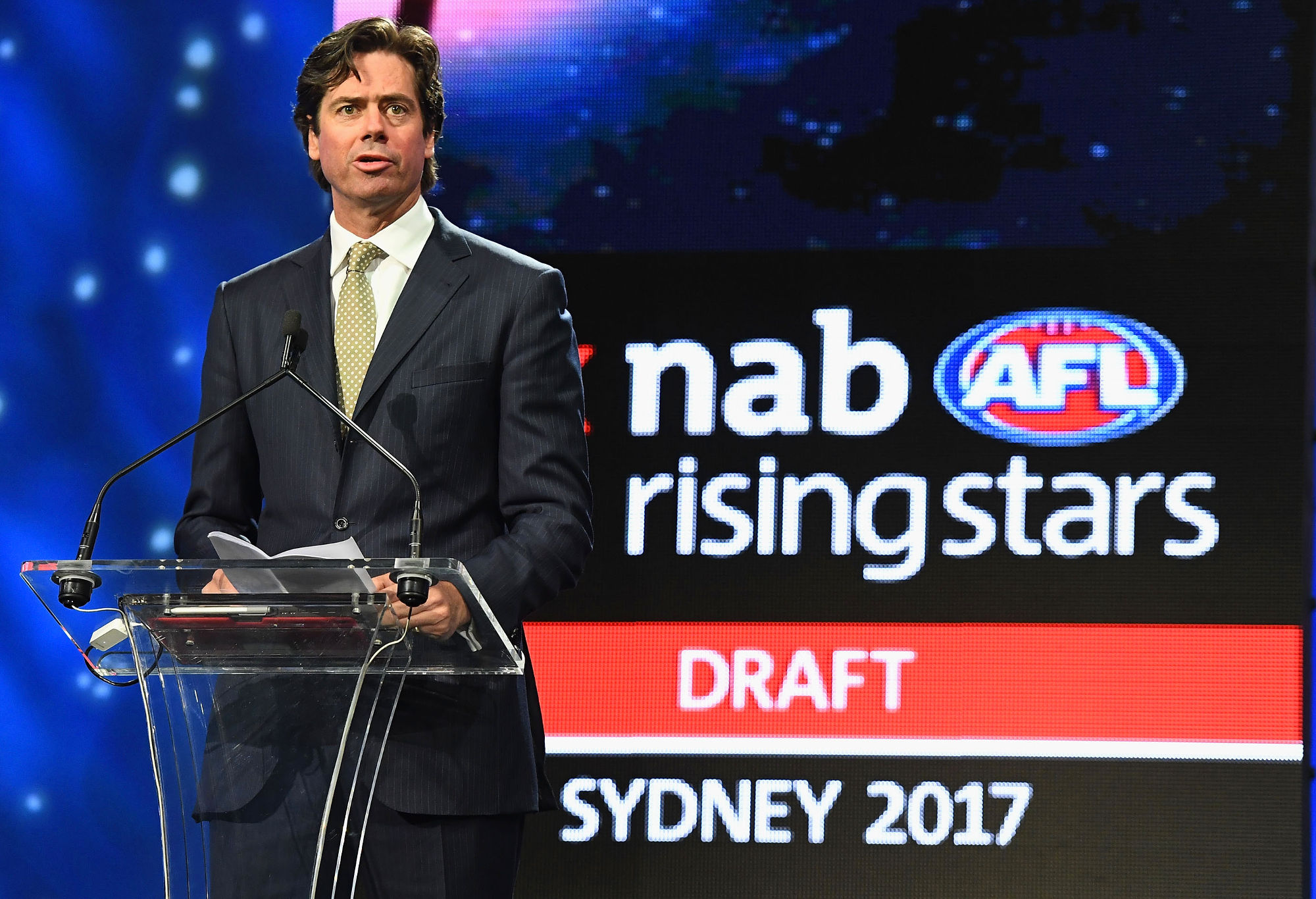
(Photo by Quinn Rooney/Getty Images)
Essentially, a club in North Melbourne’s position will have the opportunity to wait and see where a bid comes and then execute their strategy accordingly.
If a bid doesn’t come until after pick 9, then it’s a big win – the club takes a player from the open draft and then is able to secure Thomas later at a bargain price.
If a bid comes before pick 9, then it’s still a big win – the club trades pick 9 for a 2019 first rounder and then again is able to secure Thomas for cheap.
A club like North could then either look to use that first rounder to trade back into the 2018 draft after the bid has been matched, or hold it to use in next year’s trade and draft period.
For North Melbourne in particular, it’d be a handy thing to hold onto for next year if, as many expect, they make a significant play once again at the services of GWS star Josh Kelly.
Either way, the club can wind up paying a bargain price for whatever father-son or academy talent they have access to – essentially flouting the supposed enforced fairness the bidding system was brought in to police.
If I were North Melbourne, I’d make sure to have an arrangement locked in with an opposition club willing to swap its 2019 first for a high 2018 pick before the draft. I’m sure plenty will be willing.
Collingwood could do the same sort of thing with academy prospect Isaac Quaynor, or the Western Bulldogs with father-son player Rhylee West.
A nifty little loophole, don’t you think? I wonder which AFL club will be the first to flip a profit from it – and what the AFL’s reaction will be when they do.





























































































